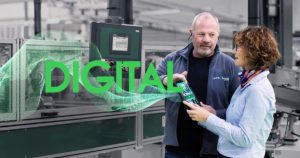The top concern or “pain point “with Secure Power in the healthcare industry continues to be—and should be—energy availability, but there are other pain points that extend beyond availability and its associated safety concerns.
Of course, availability is crucial in the health care field. Hospitals have equipment in operating rooms, emergency rooms, and intensive care departments that can’t lose power even for a millisecond if there is a disruption from the grid. Health care facilities not only need excellent backup generators and electrical architecture, but also power protection such as uninterruptable power supply (UPS) units with the highest levels of redundancy.
In a health care facility, there are three criticality levels for availability, with Level 1, the most critical, needed for operating rooms, intensive care wards, and other applications. The level of protection needed in prescribed by standards in several countries, and there also is an international standard governing energy availability and protection in healthcare. This standard is from the International Electrotechnical Commission (IEC), and is known as IEC 60364-7-710. In the U.S., the standard NFPA 99 is applied.
The issue of availability and safety is the primary Secure Power concern in the health care segment, and ideally is addressed as part of the electrical architecture and installation requirements for a facility. Schneider Electric is well positioned to ensure a comprehensive approach to Secure Power and energy management for medical facilities. To find out more about what’s involved, see this Web page on “Comprehensive, Intelligent Healthcare Infrastructure.”
However, as mentioned, health care facilities also need to:
- Improve financial performance. With this goal, the biggest gains start with the design and architecture of the energy infrastructure, and extend into the monitoring, which is supporting by monitoring software that gives facility managers a view of how much energy each system in consuming, and at what time of day, linking to building management systems for a facility-wide view. While critical applications must be protected with the proper redundancy, which consumes energy, there are areas of a facility that are less critical and can be optimized for efficient energy use, but to do that, you need effective monitoring.
- Improve productivity. Today, everything is digitized in a hospital, rather than the old days of paper records and images outputted to film. When you have a solid infrastructure that ensures safety, you also ensure that systems which convey patient information and digital images from testing modalities don’t go down. That in turn means that medical professionals don’t lose time or have to redo work.
- Data security. Data centers in hospitals also need to protected from security breaches or unexpected downtime. While servers that hold patient records or hospital information system data are usually less “critical” than a piece of life-support equipment, such data must be kept confidential and protected from loss. Some of this comes from systems management software for secure log-on and authorization, but physical security systems such as access control and closed circuit TV systems may be appropriate.
- Improve patient satisfaction. Patients are also customers, which is why you see medical facilities advertising in mass media these days. So not only is it a must for customer satisfaction reasons to keep records secure, it’s also important to protect modalities and information systems so that patients—the customers—don’t have to wait extra time because a system is exposed to delays or a failure because of a lack of protection.
If you are interested in more information on Schneider Electric’s Secure Power offering for healthcare, you can immediately access a detailed online brochure on our healthcare solutions here.
In future posts, we can get into more detail about availability and protection of critical applications in healthcare facilities, but don’t forget that these facilities also need to be profitable, productive, and patient-centered.


